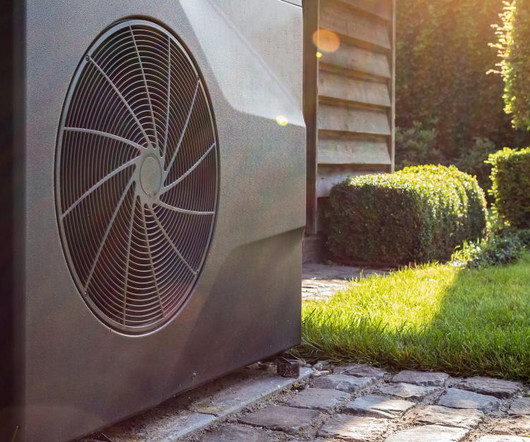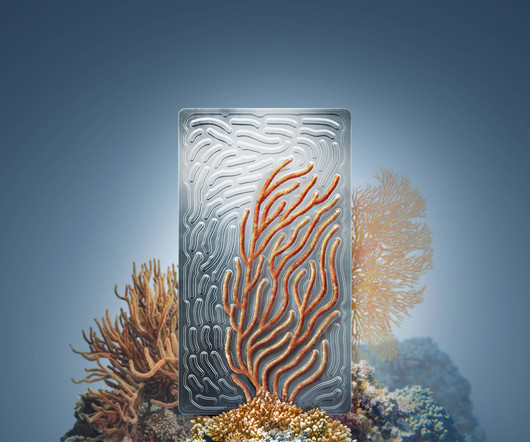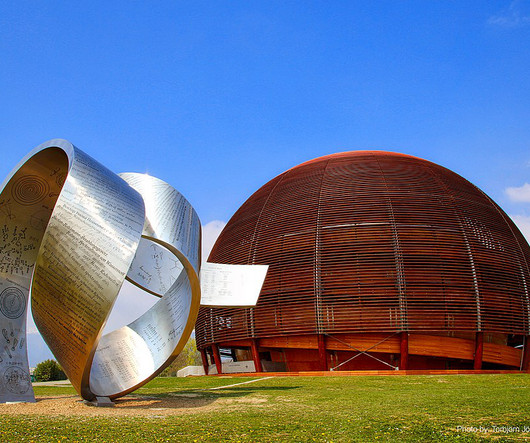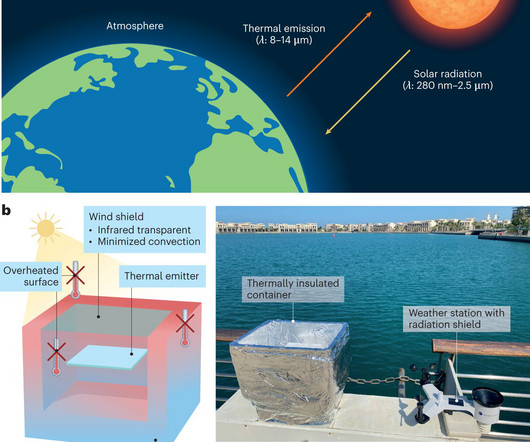Jodhpur, India Unveils A Net-Zero Public Cooling Station
NRDC onEarth
JUNE 7, 2024
As India grapples with intense heat, its cities are advancing cooling solutions to help keep people safe.
This site uses cookies to improve your experience. By viewing our content, you are accepting the use of cookies. To help us insure we adhere to various privacy regulations, please select your country/region of residence. If you do not select a country we will assume you are from the United States. View our privacy policy and terms of use.
 Cooling Related Topics
Cooling Related Topics 
NRDC onEarth
JUNE 7, 2024
As India grapples with intense heat, its cities are advancing cooling solutions to help keep people safe.

Inhabitat - Innovation
NOVEMBER 21, 2022
Buildings are using more energy to cool, and urban areas are particularly vulnerable due to the urban heat island effect. The Massachusetts Institute of Technology (MIT) has developed a new passive cooling device for buildings to help with this.
This site is protected by reCAPTCHA and the Google Privacy Policy and Terms of Service apply.

Envirotec Magazine
APRIL 18, 2024
Cloud ‘engineering’ could be more effective for climate cooling than previously thought, because of the increased cloud cover produced, new research seems to show. They were able to show that the cloud cover relatively increased by up to 50% during the periods of volcanic activity, producing a cooling effect of up to -10 W m-2 regionally.

GreenBiz
OCTOBER 8, 2020
This new cooling technology also prevents viral spread. In the face of dangerous heat waves this summer, Americans have taken shelter in air-conditioned cooling centers. The same air conditioning systems that keep us cool recirculate air around us, potentially spreading the coronavirus. Gloria Oladipo. Thu, 10/08/2020 - 00:40.

Inhabitat - Innovation
JANUARY 20, 2022
AREP, a multidisciplinary architecture agency, created a cooling system prototype based on the history, culture and original designs used by ancient civilizations.

TechXplore
JULY 4, 2024
Painting roofs white or covering them with a reflective coating would be more effective at cooling cities like London than vegetation-covered "green roofs," street-level vegetation or solar panels, finds a new study led by UCL researchers.

ThinkGeoEnergy
DECEMBER 4, 2023
ADNOC and the National Central Cooling Company PJSC (Tabreed) have announced the start of operations at G2COOL, the first district cooling project in the Gulf Region to harness geothermal energy. The cooling of buildings accounts for up to 70% of the UAE’s electricity consumption.

NRDC onEarth
DECEMBER 4, 2023
Proposed regs encourage new AC installs to be heat pumps, enabling customers to access heating and cooling in one clean appliance.

ThinkGeoEnergy
DECEMBER 12, 2023
A research project is ongoing to evaluate the viability of geothermal cooling for agro-industrial buildings at the Federal University of Mato Grosso (UFMT) in Brazil, in partnership with the University of São Paulo (USP). The project is supported by the State Government through the Mato Grosso Research Support Foundation (FAPEMAT).

Inhabitat - Innovation
JULY 8, 2021
The Groundfridge refrigerated cellar by Dutch designer Studio Floris Schoonderbeek cools using natural insulation and a battery-powered ventilation system.

Charged
SEPTEMBER 21, 2023
German automotive parts supplier MAHLE has developed a new bionic battery cooling plate with cooling channels modeled on shapes encountered in nature (i.e. MAHLE’s bionic structure improves the thermodynamic performance and structural-mechanical properties of the cooling plate, says the company. Source: MAHLE

GreenBiz
FEBRUARY 11, 2021
5 cool measurement tools attempting to quantify regenerative agriculture. Jesse Klein. Thu, 02/11/2021 - 00:05. Many practices are associated with regenerative agriculture — anything from no-till practices to pesticide-free farming. What’s more, the concept means different things for different crops in different regions.

Inhabitat - Innovation
JUNE 25, 2021
So it makes sense that the same umbrella could be adorned with solar panels and allowed to collect the sun’s energy in order to provide a cooling result. Sun umbrellas are an ubiquitous scene on coastal beaches, offering shade from the blistering sun.

TechXplore
APRIL 2, 2024
There is room for just one small bottle in the world's first refrigerator that is cooled with artificial muscles made of nitinol, a nickel-titanium alloy. This climate-friendly cooling and heating technology is far more energy-efficient and sustainable than current methods.

Renew Economy
APRIL 2, 2024
One of the two Callide C coal units has finally returned to service, after being taken offline due to a cooling tower failure. The post Callide coal unit returns to service after multiple delays with new cooling tower appeared first on RenewEconomy.

NRDC onEarth
DECEMBER 20, 2023
Sustainable cooling was among the hottest topics on the agenda at COP28, with several groundbreaking announcements for action.

Inhabitat - Innovation
OCTOBER 20, 2020
Seawater air conditioning could be a viable, renewable alternative to air conditioning, and it could save us 77% in cooling costs. Here are the pros and cons.

TechXplore
NOVEMBER 1, 2023
Researchers at the City University of Hong Kong found the secret to a more efficient, less expensive approach to keeping massive computer systems cool: Just add salt.

U.S. Green Technology
APRIL 12, 2022
All of us know that geothermal energy is used for heating, but cooling? Yes, it is also used for cooling as well. Both heating and cooling are provided with the help of ground temperatures which remain constant. The post The Advantages of Using Geothermal Energy for Heating and Cooling appeared first on U.S.

Envirotec Magazine
SEPTEMBER 9, 2021
With as much as 40% of an average data centre’s energy consumption attributable to cooling, there is a clear need for more efficient heat transfer technology when aiming to achieve net-zero carbon emissions by 2050. Access to data has become more crucial than ever, leading some to label a broadband connection as the fourth utility.

GreenBiz
AUGUST 26, 2022
The evolution of the sustainability profession has given rise to an array of roles and responsibilities across industries.

ThinkGeoEnergy
AUGUST 18, 2023
A combination of geothermal energy and solar power have provided sustainable cooling and air-conditioning to the Moncloa Transport Hub in Madrid, Spain. In recent months, there has been an aggressive movement to develop systems for using geothermal energy for cooling.

ThinkGeoEnergy
OCTOBER 30, 2023
The design phase has started for a geothermal heating and cooling demonstration project in the municipality of Carbondale in Colorado, USA. Department of Energy (DOE) for the design and eventual deployment of community geothermal heating and cooling systems. Test drilling for the project is then likely to commence by November.

Smart Energy International
NOVEMBER 21, 2023
The digitalisation of district heating and cooling is essential to decarbonising the thermal energy system, a new IEA report states. A dedicated effort should be directed to defining shared standards for data stream labelling, component naming and description of district heating and cooling network layout. Have you read?

Envirotec Magazine
DECEMBER 14, 2021
Liquid Air Energy Storage (LAES) uses electricity to cool air until it liquefies, so it can be stored until an opportune moment arrives when it can be brought back to a gaseous state and used for power generation. This is achieved by compressing the air to form a high-pressure gas, the air is then cooled by heat exchange with a cold fluid.

ThinkGeoEnergy
NOVEMBER 22, 2023
Work has started on a geothermal district heating and cooling network in Ferney-Voltaire in Ain, France, near the Geneva Airport. When completed, the network will provide low-emissions heating and cooling to 195,000 square meters of office space, business facilities, housing, and public infrastructure. It will also generate 4,500 jobs.

Green Living Guy
DECEMBER 2, 2022
During the summer months, it can be especially challenging to figure out how to live an eco-friendly lifestyle while remaining cool. The post Ways to Stay Green and Cool This Upcoming Summer appeared first on The Green Living Guy. Thankfully, there are a number of ways you […].

Charged
SEPTEMBER 21, 2023
Power conversion specialist Vanner has started serial production of a liquid-cooled converter with silicon carbide (SiC) solid-state switching for hybrid, battery-electric and fuel cell vehicles. kW, 300 A, 600 VDC to 24 VDC air-cooled converter. It is liquid-cooled to minimize the footprint, and is IP67-rated.

Charged
APRIL 20, 2023
Thursday, April 20th, 2023 Session Topics : 60-minute Feature Presentations: 10:30 AM EDT Accelerating Electric Drive Engineering With An Integrated Multiphysics Design Workflow 11:45 AM EDT Enabling Superior Mobility Experiences With TE’s Data Connectivity Portfolio 1:00 PM EDT Battery Cell Qualification for EVs 30-Minute Presentations: 8:00 AM EDT (..)

TechXplore
AUGUST 29, 2023
In a world experiencing increased heat stress, a zero-carbon-emission cooling technology that consumes no electricity, operating instead by shedding heat directly into outer space, would be a groundbreaking advance. However, poor standardization and a lack of transparency is hampering this promising technology, known as radiative cooling.

Charged
AUGUST 31, 2022
Sealing technology firm KACO has introduced the second generation of its structured mechanical seals for internal rotor cooling. The significant savings in power losses at the sealing system create a new attractiveness of direct internal rotor cooling in terms of range optimization of the vehicle,” says KACO. Source: KACO.

Envirotec Magazine
JULY 14, 2021
Maintaining the optimum digestion temperature may require additional heating or cooling. In some cases, cooling may also be required, for example where the feedstock coming into the digester comes from a higher temperature pre-treatment system such as a pasteuriser or hydrolysis tank. www.hrs-heatexchangers.com.

Charged
AUGUST 31, 2022
Whether thermal management liquid cooling loops are located at the EV charging station inverters, cable, or in association with the onboard infotainment systems or battery packs, these systems all need non-spill fluid connectors for serviceability and/or ease of use or manufacture.

Envirotec Magazine
OCTOBER 29, 2020
Past research suggests that growing international demand for cooling has the potential to drive one of the most substantial increases in greenhouse gas emissions in recent history. A new study, led by the University of Oxford and published on 19 October in Nature Sustainability , sets out a framework for delivering sustainable cooling.

BloombergNEF
MAY 28, 2024
The post Power Market Outlook: East Meets West as Japan Prices Cool appeared first on BloombergNEF. However, a combination of rising solar penetration and variable weather-driven demand spells deepening duck curves and intraday volatility.

Renew Economy
JULY 15, 2024
The post Big banks go cool on coal and gas but fall well short on climate funding: report appeared first on RenewEconomy. The big four banks have made significant strides to curb lending for fossil fuel projects but a report says they still have not met their own climate targets.

Charged
JUNE 1, 2022
Whether thermal management liquid cooling loops are located at the EV charging station inverters, cable, or in association with the onboard infotainment systems or battery packs, these systems all need non-spill fluid connectors for serviceability and/or ease of use or manufacture.

GreenBiz
APRIL 9, 2020
Thriving in the age of climate change pivots around electricity, and that means electric utilities are at the center.

FuelCellsWorks
SEPTEMBER 21, 2023
innovative Heating-Cooling System Uses Fuel Cell Exhaust Heat. An innovative heating and cooling system that harnesses the inherent high temperatures of solid oxide fuel cells (SOFC) has been developed.

Charged
SEPTEMBER 7, 2023
The pack features high-nickel cathode cylindrical lithium-ion cells, cooled by mineral oil. XING’s patented immersion cooling technology is designed to efficiently remove heat in order to prevent both thermal runaway within individual cells and fire propagation throughout the entire pack.

GreenBiz
AUGUST 26, 2022
The evolution of the sustainability profession has given rise to an array of roles and responsibilities across industries.

ThinkGeoEnergy
FEBRUARY 5, 2024
The Miami University on Oxford, Ohio will soon begin drilling for a geothermal heating and cooling system that will replace the existing natural gas-powered system at the North Chiller Plant. In late 2023, drilling work started at the Oberlin College Conservatory in Oberlin, Ohio for a similar geothermal heating and cooling system.

TechXplore
OCTOBER 11, 2023
When people get home from work in the late afternoon, the first thing they do is crank up the AC to cool their overheated homes. It's a typical, sweltering August day in Los Angeles, with temperatures pushing 95° downtown.
Expert insights. Personalized for you.
We have resent the email to
Are you sure you want to cancel your subscriptions?

Let's personalize your content